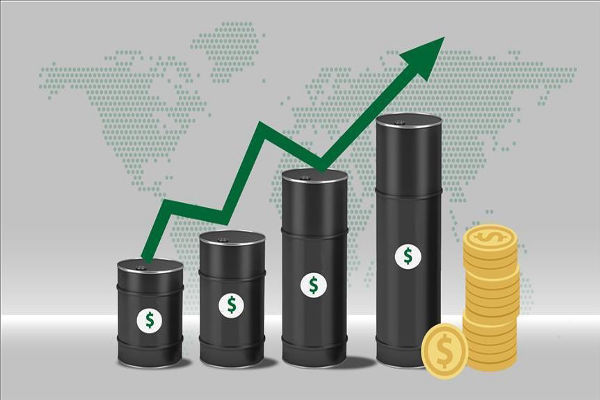Crude oil investment has become increasingly popular among investors. As a
beginner in crude oil, how to make money by investing in crude oil is a question
that needs to be explored, as crude oil investment is a relatively complex
matter that involves knowledge in platform selection, position management,
message analysis, technical analysis, fundamental analysis, arbitrage, and other
aspects. Novice investors in crude oil will only understand how to make crude
oil by mastering these knowledge points. Investors need to know what factors
will affect the production of crude oil while exploring how to make it. I have
already come to explain it in detail.

Key Points Investors Must Know About Crude Oil Investment
1. How to Choose a Reliable Trading Platform
A formal crude Oil Trading Platform is an important prerequisite for ensuring
the financial security of crude oil investors. Investors can compare it from
aspects such as regulatory agencies, fund security, deposit and withdrawal,
trading software, trading environment, platform services, etc. Investors can
verify multiple dimensions and choose their preferred platform when making a
choice.
2. How to Manage the Position of Crude Oil
There are many methods for risk control in the process of crude oil
investment, such as stopping profits, stopping losses, position management, and
so on. So the first to bear the brunt is the management of positions. Position
management is a double-edged sword that, when well controlled, enables traders
to easily move in and out of crude oil speculation. Poor control may result in
significant losses for traders.
3. How to Analyze the News about Crude Oil
The news that mainly affects the trend of crude oil includes the OPEC monthly
report, the US nonfarm employment data report, and the EIA inventory data
report. The OPEC monthly report is released from 6 p.m. to 8 p.m. Beijing time,
which has a relatively significant impact on the mid-term trend of oil prices.
Generally speaking, on the day after the release of the OPEC monthly report, the
average amplitude of oil prices is large, and the market is very sensitive to
news. During the monthly report period, there is generally no significant
fluctuation in the market on the same day. Investors can follow the trend based
on the news in the meeting and make good stops to achieve good returns.
4. How to Analyze the Technical Aspects of Crude Oil
Crude oil technical analysis, also known as crude oil technical analysis, is
the process of analyzing the current market trend, shape, K-line, golden section
line, and other indicators to determine the rise and fall of the market.
Investors need to analyze the trend, make corresponding strategies, and not
predict the market. The specific analysis of the actual crude oil market can be
based on both fundamental and technical aspects. The mainstream analysis method
in the market at present is to analyze the supply and demand relationship, and
the frequently followed news is about OPEC member countries and changes in crude
oil reserves in each country. The technical analysis is the same as for other
investment products, analyzing and judging the trend of the K-line and portfolio
form.
5. How to Conduct a Fundamental Analysis of Crude Oil
There are many fundamental factors affecting oil prices, one of which is the
U.S. dollar index. Generally speaking, the U.S. Dollar Index is the leading
indicator of crude oil prices, and the correlation between the two is very high.
That is to say, a rise in the US dollar means a decline in the crude oil
probability rate. Similarly, the Euro index and crude oil are mostly positive.
If the trend of the US dollar is in the same direction as that of crude oil and
the deviation is too severe without news support, there will be arbitrageurs who
long the US dollar and short crude oil to earn profits.
What Factors will Affect the Production of Crude Oil?
1. U.S. Dollar Index
The economic policies of the United States significantly affect crude oil prices. For example, the United States intends to control the world through the peg system between the US dollar and crude oil, and the vast majority of crude oil prices today are priced in US dollars. Therefore, all policies that can affect the US dollar will indirectly impact crude oil prices. Generally speaking, the appreciation of the US dollar leads to a decrease in crude oil prices, while the depreciation of the US dollar leads to an increase. The two exhibit a certain degree of negative correlation, while gold shows a certain degree of positive correlation with crude oil. However, this correlation has decreased significantly compared to the previous century. The economic policies of other important countries also influence crude oil prices. For instance, the use of RMB for delivery of Crude Oil Futures at the Shanghai International Energy Center and China's important economic policies will also affect crude oil prices.
2. The Supply and Demand Relationship of Crude Oil
The balance between supply and demand is a fundamental factor in determining crude oil prices. When demand exceeds supply, prices tend to rise; conversely, when supply exceeds demand, prices typically fall. Various factors influence supply and demand, including economic growth, industrial activity, and seasonal changes. For example, during winter, the demand for heating oil increases, leading to higher crude oil prices. Additionally, production decisions by major oil-producing countries, such as those within OPEC, can significantly impact the supply side of the equation.
3. Geopolitics and War
Geopolitical events and conflicts can drastically affect crude oil production and prices. Regions with significant oil reserves, such as the Middle East, are often hotspots for geopolitical tension. Wars, political instability, and sanctions can disrupt the supply of oil, leading to increased prices. For example, tensions in the Persian Gulf or sanctions on countries like Iran can lead to fears of supply shortages, causing price spikes. Conversely, peace treaties or resolutions of conflicts can lead to price stabilization or declines.
4. Changes in Crude Oil Inventory
Crude oil inventories, which are stocks of oil held by governments and companies, can provide insights into market trends. When inventories are high, it indicates a surplus, which can lead to lower prices. Conversely, low inventories suggest a shortage, which can drive prices up. Inventory levels are reported regularly by organizations such as the U.S. Energy Information Administration (EIA), and these reports are closely watched by traders and analysts.
5. Intervention by Important Organizations
Organizations such as the Organization of the Petroleum Exporting Countries (OPEC) play a critical role in crude oil markets. OPEC members coordinate their oil production policies to influence prices. For instance, if OPEC decides to cut production, it can lead to higher prices. Similarly, interventions by other organizations, such as the International Energy Agency (IEA), can also impact oil markets through strategic reserves releases or policy recommendations.
6. The Short-Term Flow of Funds in the International Capital Market
The flow of capital in and out of oil markets can have significant short-term effects on prices. Speculative trading by hedge funds and other financial institutions can lead to price volatility. For example, if investors anticipate a rise in oil prices due to geopolitical tensions, they may buy oil futures, driving prices up. Conversely, if they expect prices to fall, they may sell off their positions, leading to lower prices. The movement of funds is influenced by market sentiment, economic data, and broader financial market trends.
7. New Energy Development to Replace Crude Oil
The development and adoption of alternative energy sources can impact the long-term demand for crude oil. As renewable energy technologies, such as solar, wind, and electric vehicles, become more viable and widespread, the reliance on crude oil may decrease. Governments worldwide are investing in clean energy initiatives to combat climate change, which could lead to a structural decline in oil demand over time. This shift towards sustainable energy sources can put downward pressure on crude oil prices in the long run.
By understanding these factors, investors and policymakers can better anticipate and react to changes in the crude oil market. Whether through analyzing economic policies, monitoring geopolitical developments, or keeping an eye on new energy technologies, staying informed is key to navigating the complexities of crude oil production and pricing.



























